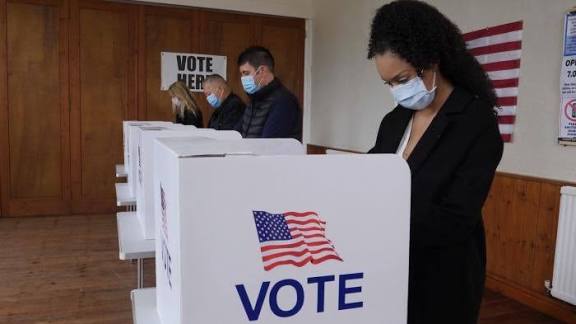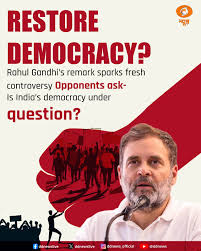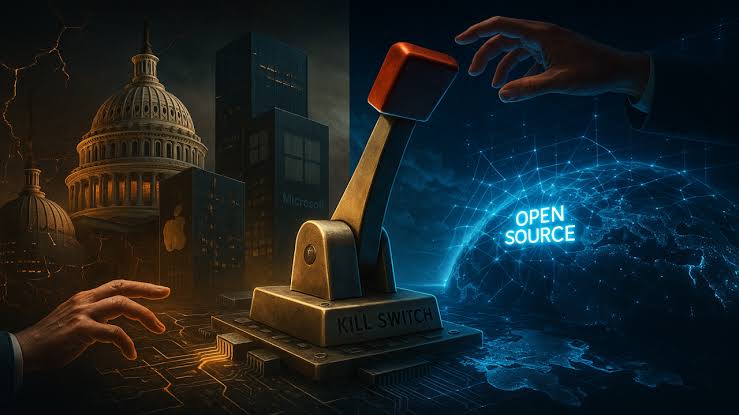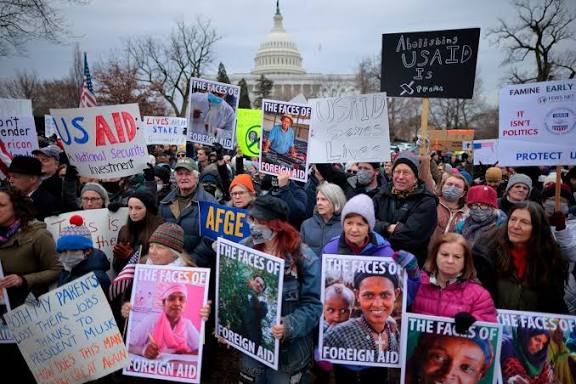Trump response to tariff ruling: Wall Street Journal report Today
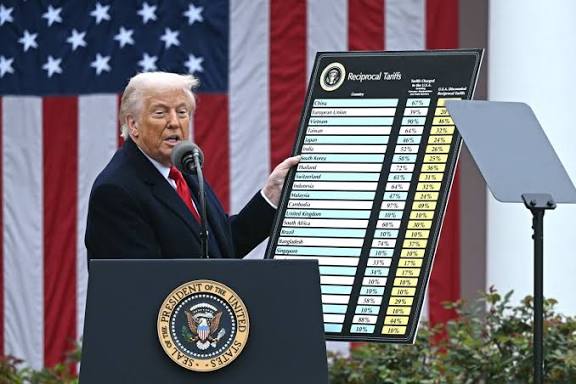
Chinese leader Xi Jinping thinks the president will remove new tariffs before launching them, which will send the market into turmoil. Today we will discuss about Trump response to tariff ruling: Wall Street Journal report Today
Trump response to tariff ruling: Wall Street Journal report Today
In mid-2025, a pivotal court decision delivered a major blow to one of former President Donald Trump’s hallmark economic tools — sweeping emergency tariffs. The ruling declared that the so-called “Liberation Day” tariffs exceeded the executive authority under the International Emergency Economic Powers Act (IEEPA).
That judicial check unleashed a cascade of political, economic, and strategic debate — triggering a staunch reaction from Trump and his allies, renewed questions about the legitimacy of executive power in trade policy, and deep uncertainty in markets and diplomatic circles. This article explores how Trump responded, what lies ahead, and how this moment could reshape U.S. trade strategy.
Background: The “Liberation Day” Tariffs and the Legal Challenge
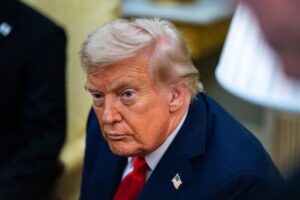
In April 2025, Donald Trump launched a bold initiative by proclaiming April 2 as “Liberation Day.” He signed Executive Order 14257, applying a baseline 10 percent tariff on imports from nearly all countries, with steeper “reciprocal” rates for nations with substantial trade deficits.
Trump framed this action as an assertion of economic sovereignty — to force fairness in trade, reduce the U.S. trade deficit, encourage domestic production, and generate revenue. But the scale and scope of the tariffs immediately triggered legal challenges.
Several cases were filed by business groups and importers contending that the tariffs exceeded presidential authority and violated constitutional principles. On May 28, 2025, a three-judge panel in the U.S. Court of International Trade unanimously ruled that the “Liberation Day” tariffs were unlawful. The court held that the economic emergency declaration was not justified under IEEPA, that the act did not grant the president unbounded power to impose tariffs, and that the delegation lacked the clarity required under the “major questions” doctrine.
The judgment permanently blocked enforcement of the challenged tariff orders and directed that Customs stop collecting the levies. That decision set up a high-stakes confrontation — would Trump accept the limitation, pivot to alternative tools, or fight onward through appeals and political pressure?
Trump’s Initial Reaction: Defiance, Alternative Paths, and Rhetorical Fire
Rather than retreat, Trump’s reaction was assertive and multifaceted, combining defiance, political mobilization, and promises of escalation.
1. Rejection of the Court’s Authority and Criticism of Media
Trump immediately rejected the ruling’s legitimacy. He accused the judiciary of undermining the executive branch’s power to protect national economic interests and framed the decision as a blow to American workers and manufacturers.
He also criticized major media outlets, especially those that have historically opposed his trade policies, claiming they represented “globalist interests.” Trump reiterated that his tariff policies were designed to protect American industries from unfair foreign competition, suggesting that the ruling was an example of “judicial activism.”
2. Promises to Appeal and Legislative Mobilization
Trump’s legal team quickly announced plans to appeal the decision, framing it as a temporary obstacle rather than a defeat. He pledged that his administration would take the case to higher courts, confident that it would eventually be overturned.
Simultaneously, his political allies began discussing legislative options to strengthen the executive’s trade powers. Supporters proposed new laws that would codify the president’s ability to impose tariffs in response to foreign economic threats. Some even suggested reforms to the IEEPA to explicitly include economic emergencies as grounds for unilateral tariff actions.
3. Threats of Alternative Tariff Authorities
Trump also signaled that he would not rely solely on IEEPA for future tariff decisions. He mentioned several alternative statutory pathways, including:
Section 232 (Defense Production Act): Previously used to impose tariffs on steel and aluminum for national security reasons.
Section 301 (Trade Act of 1974): Allows tariffs in response to unfair foreign trade practices.
Section 338 (Tariff Act of 1930): Permits tariffs up to 50% where discriminatory practices are found.
Section 122: Enables short-term tariffs to address “large and persistent” trade surpluses by other countries.
By referencing these tools, Trump indicated that his broader trade strategy would continue, even if the courts limited one particular legal basis.
4. Reassurances and Market Management
Alongside defiance, Trump sought to calm markets and reassure investors that his administration would act responsibly. He emphasized that his goal was not to destabilize trade but to rebalance it in America’s favor.
He pointed to U.S. strengths in resources, manufacturing, and innovation, asserting that the nation could withstand temporary turbulence. Trump also insisted that foreign partners “need America more than America needs them,” framing his tariff policy as leverage for negotiation rather than isolationism.
Strategic Implications: Power, Precedent, and the Future of Trade Policy
Trump’s response to the tariff ruling goes beyond a single court case — it strikes at the core of constitutional balance, executive power, and America’s role in the global economy.
Constitutional and Institutional Tensions
The litigation exposed a constitutional dilemma: can the president unilaterally impose broad economic measures during peacetime under the guise of an emergency?
The court’s decision invoked the “major questions” doctrine, which requires Congress to explicitly authorize executive actions that have sweeping economic consequences. This sets a precedent that may restrict future presidents, both Republican and Democrat, from using emergency powers to reshape trade policy unilaterally.
If higher courts uphold the ruling, Congress would be compelled to play a more active role in trade decisions — shifting the balance of power away from the executive branch.
Market and Business Uncertainty
For investors, manufacturers, and consumers, the ruling created a new layer of uncertainty. Businesses that had already adjusted supply chains to account for Trump-era tariffs suddenly faced a policy vacuum.
Short-term: Some companies benefited immediately from the lifting of tariffs, especially import-heavy sectors such as retail and technology.
Medium-term: Many remain cautious, anticipating that Trump could reimpose tariffs under other laws.
Long-term: Persistent uncertainty may deter investment, as global suppliers hesitate to expand operations in an unpredictable policy environment.
Financial markets initially reacted positively to the court’s decision, viewing it as a sign of stability. However, Trump’s defiant tone and threats of alternative tariff routes rekindled concerns of trade wars and retaliatory measures.
Diplomatic and Geopolitical Ramifications
On the global stage, Trump’s reaction sent mixed signals. While he reassured certain allies that the United States remained open to fair trade, his continued emphasis on tariffs reinforced perceptions of American unilateralism.
China: Trump’s threats of imposing 100% tariffs on Chinese goods over rare-earth element restrictions revived fears of a renewed trade confrontation. Beijing warned that such measures would prompt strong retaliation.
European Union: EU officials urged caution and emphasized the need for predictable trade policy. Some European leaders privately expressed relief at the court’s decision, seeing it as a restraint on U.S. protectionism.
Developing Nations: Countries dependent on U.S. markets faced uncertainty over export prospects. Several trade ministries began exploring alternative partnerships to hedge against future disruptions.
Diplomatically, the episode reinforced a perception that U.S. trade policy remains heavily personality-driven, fluctuating with leadership changes rather than long-term bipartisan strategy.
Political and Electoral Stakes
For Trump, tariffs are not just policy — they are central to his political identity. The “America First” platform, rooted in economic nationalism, resonates deeply with his voter base.
His supporters view the court ruling as another example of institutional resistance to his populist agenda. By fighting back, Trump strengthens his narrative of standing against the establishment and defending American workers.
However, critics argue that the tariff wars have hurt consumers through higher prices and disrupted global supply chains. They frame the court decision as a victory for economic stability and rule of law.
The ultimate political impact will depend on whether Trump can maintain his image as a strong leader while managing the economic consequences of his aggressive trade policies.
Economic and Policy Outlook: Short and Long-Term Scenarios
Given Trump’s response and ongoing appeals, several possible outcomes could shape U.S. trade and economic policy over the next year.
Scenario 1: Controlled Retrenchment
Trump may temporarily ease tariff implementation while the legal process unfolds. Under this scenario, his administration would focus on narrow, targeted tariffs justified under specific statutory provisions rather than sweeping emergency declarations.
This path would reduce market volatility while preserving political leverage. It would also allow the administration to claim compliance with the judiciary while continuing to advance nationalist economic goals.
Scenario 2: Aggressive Reimposition
Alternatively, Trump could escalate quickly, reimposing tariffs through other legal mechanisms such as Section 232 or Section 301. This would likely reignite trade tensions with major partners and trigger new lawsuits.
Such an approach would please his political base but risk economic backlash. Markets would likely respond with short-term volatility, while global trading partners could retaliate with their own tariffs on American exports.
Scenario 3: Legislative Expansion of Executive Authority
Trump’s congressional allies could attempt to pass legislation explicitly granting the president broader trade powers in economic emergencies. This would represent a significant constitutional shift, strengthening the executive branch’s role in economic governance.
However, such legislation would face fierce opposition from both parties concerned about overreach. It might also spark new legal challenges, given the separation of powers and limits on congressional delegation.
Scenario 4: Negotiated Compromise
Under mounting legal and economic pressure, Trump might choose a pragmatic route. He could pursue new trade agreements that secure concessions from foreign partners in exchange for tariff relief.
This approach would allow Trump to claim victory — achieving fairer trade terms without necessarily escalating a full trade war. It would also signal a more diplomatic and results-oriented trade strategy heading into future elections.
Broader Economic Impacts: Inflation, Jobs, and Industry Effects
The court ruling and Trump’s response have ripple effects across multiple sectors of the U.S. economy.
Manufacturing: U.S. factories could benefit from reduced input costs if tariffs remain lifted, but face renewed pressure if Trump reinstates them under alternative laws.
Agriculture: Farmers remain vulnerable to retaliatory tariffs from trading partners, especially China and the European Union. Past trade disputes saw U.S. soybean exports plunge when tariffs escalated.
Technology and Retail: These industries rely heavily on imports and could face higher costs if tariffs return. Consumers may see price increases on electronics, clothing, and household goods.
Energy and Minerals: Trump’s focus on rare-earth elements underscores a push for resource independence. Higher tariffs on critical minerals could accelerate domestic mining investment but also strain relations with resource-exporting nations.
Inflationary pressures remain a key risk. Even though tariffs generate revenue, they tend to raise prices for consumers and businesses. Economists warn that a prolonged tariff regime could undermine monetary policy efforts to control inflation.
Public Opinion and Media Narratives
Public opinion remains deeply divided on Trump’s tariff strategy. Supporters argue that strong tariffs are necessary to protect U.S. industries and deter unfair foreign practices. They believe the court’s ruling undermines national security and economic independence.
Critics, including many economists and business leaders, contend that tariffs function as hidden taxes on American consumers. They argue that long-term competitiveness should come from innovation and productivity, not trade barriers.
Media coverage reflects this polarization. Some conservative outlets frame the ruling as judicial interference with a duly elected president’s policy, while mainstream economic commentators highlight the importance of maintaining legal checks on executive overreach.
Conclusion: A Defining Moment for U.S. Trade and Governance
Trump’s response to the tariff ruling marks a defining moment in American trade history. The court’s decision placed firm limits on presidential power, reinforcing that economic emergencies do not grant unlimited authority. Yet Trump’s defiance, legal appeals, and exploration of alternative tariff mechanisms demonstrate that he remains determined to reshape global trade dynamics on his terms.
This confrontation reveals a deeper struggle — between executive ambition and constitutional restraint, between economic nationalism and global interdependence, and between short-term political victories and long-term economic stability.
In the months ahead, the outcome of appeals, congressional reactions, and international negotiations will determine whether this episode becomes a turning point in restoring balance between branches of government or a catalyst for a new era of assertive economic populism.
One thing is certain: Trump’s response to the tariff ruling ensures that trade policy will remain at the center of America’s political and economic debate for years to come.
How useful was this post?
Click on a star to rate it!
Average rating 0 / 5. Vote count: 0
No votes so far! Be the first to rate this post.
About the Author
usa5911.com
Administrator
Hi, I’m Gurdeep Singh, a professional content writer from India with over 3 years of experience in the field. I specialize in covering U.S. politics, delivering timely and engaging content tailored specifically for an American audience. Along with my dedicated team, we track and report on all the latest political trends, news, and in-depth analysis shaping the United States today. Our goal is to provide clear, factual, and compelling content that keeps readers informed and engaged with the ever-changing political landscape.
